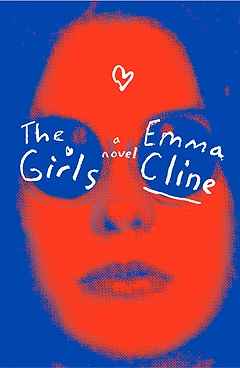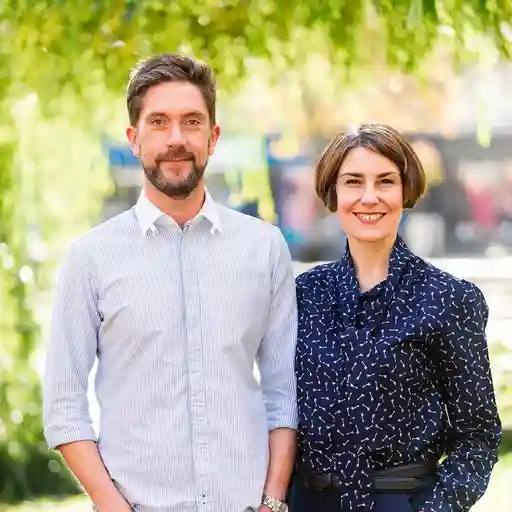
Shaelin Bishop
Shaelin Bishop is a fiction writer from Vancouver and Reedsy’s video content producer. Her stories have appeared in The Fiddlehead, The Puritan, PRISM international, The New Quarterly, Room Magazine, Minola Review, and are forthcoming in CAROUSEL.
So first of all, we're going to talk about what a character description actually is. It might seem fairly self-explanatory at first; it's a description of a character. But, it's not just a description of what a character looks like. It's also our visual introduction to a character.
What is a character description?
Character description can, of course, include what a character looks like. Most of the time when you're describing a character, you're probably going to include some amount of detail about their appearance. But it can also include things like their body language, their mannerisms, their demeanor, their facial expressions, their clothing, or even a scene or a conversation they’re a part of.
And it's often these things in conjunction with what a character looks like that really give us an impression of a person. If we just get a few physical traits there's not really much to read into, but it's all those other things alongside what your character looks like that'll create a more memorable impression of a character.
And usually, that's the goal when you're writing a character description, right? You want to create a vivid sense of what the character looks like. And you also want the reader to be intrigued by this character and want to know more about them.
Why are they important?
Not all authors decide to describe their characters and not all characters need to be described. So you don't need to write a character description. There are going to be plenty of cases where you just feel like it's not necessary. Maybe the character is too minor or they just appear briefly. Maybe stylistically, you feel like you just don't need to describe your characters. Some authors just don't physically describe their characters. But, if you use them properly, they can be a really useful tool.
They can help the reader paint a mental picture of the character. I tend to prefer to describe my characters because I know that, as a reader, I like to have a visual sense of what someone looks like. I'm the kind of reader who struggles to imagine what a character looks like if the author has not described them. So then I spend the entire novel just seeing a vague blur, and I have no idea what this person looks like. And so the scenes don't look as vivid to me because I can't picture the people in them. That’s why I also try to incorporate character descriptions into my own writing.
They can also provide deeper insight into a character. It's not just about what the character looks like; it's introducing the character in a way that tells us more about them that maybe we wouldn’t otherwise be able to notice. And we'll talk about some of those things in a moment.
Many writers will have heard the phrase show don't tell. It's pretty classic writing advice. It means that rather than blatantly explaining things to a reader, it's usually richer when things are described. So rather than telling us, “this character is intelligent,” we’d want to see the character being intelligent and doing intelligent things on the page. And you can use character descriptions as a form of showing in a lot of cases.
So we can learn about the character being described, of course, but we can also learn about the character who is doing the describing.
Say you’re writing in the first person and your main character is describing their neighbor: we can, of course, learn about the neighbor, what the neighbor looks like, and maybe a few things about the neighbor, but we can also learn about the main character based on how they see them.
Someone's clothing, the way they present themselves, their body language, really anything about them can show us aspects of their personality or lifestyle. Maybe they're carrying something around that can tell you something about their job or their hobbies.
So, not only is a character description more than just what a character looks like, but the language being used to describe them can also add to the descriptions themselves.
Make your descriptions work harder
When character descriptions fall flat, it's usually because they're not working hard enough in the narrative. I think they can be a slightly controversial aspect of writing; some writers just aren't a fan of them. They can be seen as kind of vain or indulgent, like, oh, you don't need to know what people look like. But, if you make your descriptions work harder within the narrative and use them to their full potential, they can be useful tools.
Plain descriptions are not interesting
I think drawn out, but plain descriptions usually aren't that compelling and are what tend to give character descriptions their bad reputation. If every character is just described as ‘here's the character, they have brown eyes and green hair’, there’s nothing interesting about it to grab the reader’s attention. It’s just a list of facts that aren’t that compelling. So of course, let's talk about how we make them do more.
I would say that character descriptions are as useful as setting descriptions. I think it's not that controversial to describe the setting; that's usually seen as pretty standard setting the scene. But, for some reason, character descriptions are sometimes seen as controversial, even though people are usually the most compelling thing in a story. And they're usually the most compelling thing in a scene, so why not describe them? You want to ask yourself what you can show about your character — other than what they look like — through a description.
Highlight something interesting
One really good way to do that is to try and highlight something interesting. You want to make the reader want to know more about this character. If there's nothing really memorable in a character description, then it won’t do much work in your story. Trying to hone in on something interesting will be a lot more impactful.
For example, maybe they have an interesting physical trait. Maybe there's just something interesting about the way they look, like an interesting tattoo or hairstyle. Maybe they have an interesting way of moving and their body language is quite interesting. We'll talk about active character descriptions in a second, but if you can describe your character in a moment when they're doing something interesting, you can do a lot of character building.
Maybe they're dressed in an interesting way - someone's clothing can reveal a lot about them. Maybe they're holding something peculiar that’ll make a reader want to know more. If they're walking down the street with something bizarre, like if you saw someone walking down the street and they were just carrying a giant toad, you’d want to know why that person is carrying this strange amphibious animal down the street.
The importance of language
Naturally, language is going to be very important in your descriptions. It's not just about saying interesting things, but it's also how you say it and using language that is conducive to the character. When you're describing someone, you want to use language that makes sense for that character. So we're going to look at three sentences that are all describing the same trait.
She had grey eyes, like the blade of a cutlass.
So the implications here from this simile are that she may be sharp and violent, or maybe she’s clever. I think that that one is a bit more abstract. There's not a direct link between those two things, but personally, it's how I would interpret it. If I read that description, I would think maybe she's clever or cunning.
She had grey eyes, like the belly of a salmon.
This is the same trait and could even be the same character, but what implications do we get from this? From this, I get that she’s naturalistic and down to earth because of the mention of an animal. But, I also think resourceful. This isn’t directly stated, but to me, if I read that sentence, I would think maybe this is a resourceful character who can take care of herself.
She had gray eyes, like the buttons of a flute.
So again this could be the same person, same trait, but what do we get from this? From this, that she’s artistic and sweet because the flute is an instrument that sounds quite sweet. But to that, I also get the implication of innocence from the whimsical nature of flute music.
So you see that we can change the impression you’re giving of a character quite a lot based on the word choice. Here, we have the same trait of gray eyes, but with a different simile to describe it and that description can change how we feel about the character being described as well as the narrator giving the description. If this was first person, maybe we're also learning about the main characters' world and why they might make certain word choices.
One question people often have about character descriptions is how do I integrate them into the narrative? I think we've probably all seen and maybe even written a description of a character describing themselves by looking into a mirror which is something you should avoid. One good strategy is to make it more active. Only showing a character’s static traits can feel quite passive and become repetitive.
Here’s one that I wrote which just isn’t that interesting:
The gardener had long red hair and brown eyes. She wore overalls and work boots. A thin scar cut across her face. She had narrow features, and usually wore her hair in a ponytail.
Maybe this is a very interesting character. Maybe she's a very interesting person, but I don't really get that sense from this description. I'm not really that interested to learn more about her from this and the writing itself is not that interesting. The sentence rhythm is very repetitive. So what if we made it active and the character was doing something while she was being discussed?
Here’s a description that makes the character sound a little more interesting:
The gardener wiped the back of her gloved hand on her forehead, and a crumble of dirt dusted the lashes of her brown eyes. Her clothes — overalls and work boots — were clotted with mud, and sweat pearled her narrow nose and thin cheeks. She tossed her gloves to the ground and unwound her red hair from its ponytail.
I think this is slightly more interesting writing because she's actually doing something so seems more dynamic. How often are we just standing there in the void? Usually we're out there living our lives, being active. Here, she is actually doing gardening, which makes sense because she is a gardener. And so we're able to get more variety in the sentence structure. Rather than just a list of traits, we're seeing the character in action and we're also getting to see her in her world.
Perspective
So I think I mentioned this a little bit earlier but the importance of perspective in a character description is that what makes a character description interesting is often the perspective of the narrator. And I think this will be shown well in the example that we're going to look at in just a second.
But if a character is describing themselves, you can learn about their view of themselves through that description. And it’s not just about how they perceive themselves physically; it can also reveal their sense of themself as a person. Or if they're describing another character, we can learn about their relationship with this person. Maybe it's a character that they have an existing relationship with, or maybe we can learn about their initial impression of them if it's their first time meeting.
So this is an example of making your character descriptions work harder; we can learn about both people involved through the description. If there were two characters in this scenario, or even if there's just one, your narrator's biases and perspective is just as compelling as the objective details. To be honest, it's probably even more interesting; probably more so than just what someone looks like. The interesting thing is how the characters feel about each other.
Do’s and Don’ts
Do show the character doing something interesting. That'll just give you more to work with. You'll probably have more interesting sentence structure.
Do use interesting language. If the language is dull it’ll lead to a weak description. I think I've probably read books before where I could tell the writer was a little scared to describe the characters. There would be beautiful sprawling descriptions of the setting and then the characters would be described very simply. You would barely even notice that the characters were being described.
You should give the same amount of care to the language of a character description as you give to describe anything else you want to describe.
Do describe your characters beyond their objective physical traits. What can you learn about your characters by how they behave, or move.
Don't want to have the character describe themselves by looking in a mirror. This is a big cliche. It's probably the biggest cliche for writing character descriptions. Of course, all cliches can be subverted but, if possible, I would avoid this.
Avoid using purple prose. I think purple prose is usually common to a lot of character descriptions. If you don't know what purple prose is, it's basically just over-embellished prose that doesn't actually add anything. Like it's complicated just for the sake of being complicated rather than being good writing. Authors prioritize the complexity rather than the effectiveness. Purple prose, which usually sounds pretty melodramatic, can be magnified in a description of a character. Say you were describing someone's eyes as ‘glittering, amber orbs.’ Usually, if you're using the word ‘orbs’ to describe eyes, you might be veering into purple prose if you’re using too many adjectives.
Don't give a simple list of facts, especially for more important characters. It can be okay if it's just a character who appears briefly, you want to quickly describe them and just want to say something quick about what they look like. But for more important characters, if you actually want to make good use of the description rather than just give a quick list of objective facts.
Examples of character descriptions
So now let's look at some examples. I'll admit it was actually kind of hard to find examples for this lecture, because, although I can kind of remember which books had good character descriptions, I could not remember where they were in the book. And so I spent a lot of time flipping through books that I know have good writing and trying to find the districts of the characters, but I did end up finding three.
The Girls by Emma Cline
So the first one that we're going to look at is quite good. It’s not a super crucial character, but I think it shows some interesting thoughts from the narrator. This is from The Girls by Emma Cline.
Helen, a girl who seemed close to my age, though maybe it was just her pigtails. She was pretty in the youthful way of hometown beauties, snub-nosed, her features accessible, though with an obvious expiration date.
 So, this is the kind of example that doesn't actually tell us much about what she looks like. We know she has pigtails and we get a description of her nose, but it's more about the perspective of the narrator. Describing her features as accessible with an obvious expiration date honestly says more about the narrator and the narrator's initial judgment than the character being described. So this is a good example of a character description that leans more into perspective rather than concrete physical truth.
So, this is the kind of example that doesn't actually tell us much about what she looks like. We know she has pigtails and we get a description of her nose, but it's more about the perspective of the narrator. Describing her features as accessible with an obvious expiration date honestly says more about the narrator and the narrator's initial judgment than the character being described. So this is a good example of a character description that leans more into perspective rather than concrete physical truth.
Exit West by Mohsin Hamid
This is one of my all-time favorite novels; it features two characters and mostly focuses on their love story. And so this is a description of a love interest, which I think tends to lead to pretty perceptive, pretty romantic character descriptions because the characters are intrigued by each other physically. And I think that this is a really great example of picking out really interesting details.
She was always clad from the tips of her toes to the bottom of her jugular notch in a flowing black robe. […] Saeed noticed that Nadia had a beauty mark on her neck, a tawny oval that sometimes, rarely but not never, moved with her pulse.
I think that that line is just so lovely - noticing that she has a beauty mark. Picking out a physical trait about the characters is standard for a character description, but then a narrator goes on to notice that it rarely but not never moves with her pulse. This shows how perceptive this character is in watching her which implies attraction. And I think it's just a very lovely detail.
Astra by Cedar Bowers
So this one is a slightly longer description. It actually just came out last month. This novel is structured so that every single chapter follows a different character, but they're all about their interactions with the main character, Astro. So it's about Astra and how other people see her through their interactions with her throughout her life. So this is from very early on in the book when the main character Astra is pretty young, maybe around 10, and the narrating character is also a child. It goes:
The girl grins, shimmies over the windowsill, and then drops silently to the carpet. She’s wearing the same brown corduroy dress she had on yesterday. And Kimmy notices that her legs are covered in bruises and bug bites, and her ragged hair looks as if it has been sheared with a bread knife. When she tucks a chunk of her near-black bob behind her ear, Kimmy really notices her scars: the tissue tight and shimmery. She’s like a character from a book. Like Gretel or Tinkerbell or Little Red Riding Hood. Brave. Courageous. This girl wouldn’t blink if she ran into a wild animal, or a witch, or worse.
So this is very clearly from the perspective of a child and so we get this really interesting contrast of how this child, with very little life experience, sees this other child who is very intriguing and bizarre to her. She's covered in bruises and bug bites, her hair, it looks like it's been treated with a bread knife. She's someone kind of odd and the main character is young, she doesn't really know how to interpret the bizarreness of this character quite yet. So I think this is very effective in using the voice of the narrative.
Return to Reedsy Live for more webinar replays.





